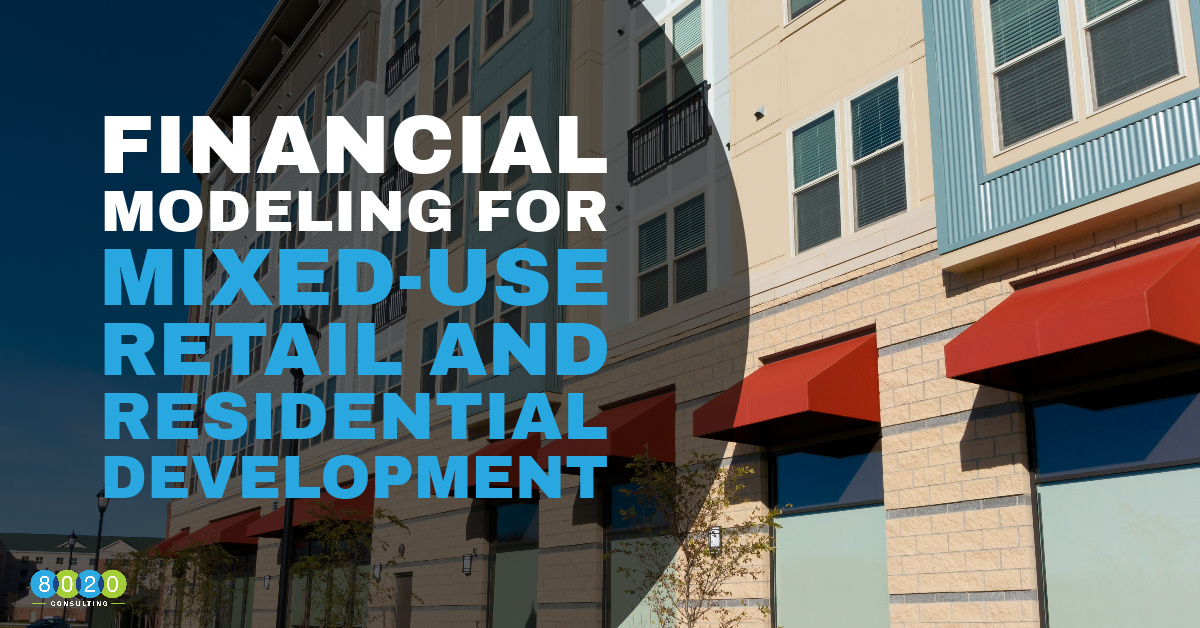
In this article, we will explore mixed-use development and discuss the differences between retail and residential components and how to reflect these differences in the financial model. While this article will focus on these two types of real estate since they are my area of expertise, it’s worth noting that mixed-use developments can also include office, hospitality, and entertainment spaces, among others.
Benefits The Mixed-Use Development
Mixed-use development is an appealing option for developers and investors because it maximizes the potential of a property by utilizing it for multiple purposes. For example, a mixed-use building could have a retail store on the ground floor, offices on the middle floors, and residential units on the top floors.
One of the most significant benefits of mixed-use development is that it creates a vibrant and dynamic community. With a blend of residential and commercial properties, residents have easy access to services and amenities, while local businesses have a built-in customer base.
In addition, mixed-use developments can help reduce traffic congestion and carbon emissions. By living, working, and shopping in the same area, people are less likely to need to drive long distances, thereby reducing long car trips.
From an investment perspective, mixed-use properties offer a more diverse, stable, and reliable source of income. With a varied range of tenants or essential services for residents, the risk of vacancy is reduced, and if one type of tenant leaves, there are still other sources of income to rely on.
Challenges of the Mixed-Use Development
While mixed-use developments offer many benefits, they also present challenges. One of the biggest obstacles is navigating zoning regulations, which can make it challenging to combine different types of properties in a single development. In addition, developers must ensure that each use is compatible with the others and that there are no conflicts for tenants and residents.
Another challenge is designing a building that is flexible enough to accommodate different uses. Commercial properties may have different requirements than residential ones, particularly when it comes to heating, ventilation, and air conditioning. This can lead to additional design and material costs, which should be taken into account in the financial model.
Despite these challenges, the popularity of the mixed-use model is on the rise as it benefits developers, investors, and communities.
The Feasibility Model or Pro Forma
The feasibility models for residential and retail development have many differences. The primary overall difference is that residential development focuses on creating units for people to reside, while retail development focuses on creating spaces for businesses to operate. This primary difference impacts the
feasibility models for both types of development. Below, I will discuss the differences between the two types of models and how they may be reflected in the feasibility. However, I cover the differences in a more theoretical manner rather than covering the technical mechanics that you would see in an Excel file.
Revenue
Revenue streams differ for residential and retail developments. In a residential development, the primary revenue stream is rental income from the units. The feasibility analysis typically uses monthly rental amounts and considers factors such as unit mix and market rates to determine annual income.
For retail developments, revenue comes from lease payments by businesses occupying the space. The revenue is typically calculated as annual rent per square foot and can be used to derive useful metrics such as rent by tenant type. Retail revenue is more volatile than residential revenue, as it depends on the success of businesses. Percentage rent deals can align the interests of landlords and tenants, with both benefiting from higher sales and foot traffic.
Costs
The costs associated with residential and retail development differ outside of land acquisition. Residential development costs primarily involve construction and marketing, whereas retail development costs include construction, marketing, and tenant improvement costs. Tenant improvement costs cover modifications to the space to meet the business’s requirements occupying it. Complexity in mixed-use developments usually leads to higher construction costs, costs from consultants for permitting, and design expenses. In retail, the more popular dining-related tenants tend to have higher tenant improvement costs.
Financing
Financing for residential and retail development differs as well. Residential development financing is easier to obtain and typically cheaper due to being perceived as less risky than retail development. Retail development financing is often more complex as lenders need to assess the creditworthiness of the businesses occupying the space and their ability to pay rent, leading to higher interest rates. The cost or interest rates for mixed-use developments usually sit between the cost of focused retail or multifamily residential developments.
Demand Factors
Population growth and demographic changes drive the demand for residential development. In contrast, consumer behavior, such as shopping habits and spending patterns, drives the demand for retail development. Competition from other retail spaces in the area and market/demographic factors like average household income in the area can also impact retail space demand. Successful mixed-use development and the tenant mix in a project can harness the demand for the area. Market research is crucial for mixed-use development projects in a given market.
Risk Factors
Residential development is generally less risky than retail development because there is a higher demand for housing than for retail space. The success of retail development is closely tied to the success of the businesses occupying the space, which can be impacted by economic conditions and competition. Attracting retail tenants that emphasize essential services can mitigate this risk. For example, many mixed-use developments attract retail tenants that provide services like food, salons/barbershops, dry cleaning, and healthcare.
Example
The company I was at owned an aging shopping center with a lot of foot traffic due to its favorable location. We decided to pivot to a mixed-use redevelopment with a residential component due to increasing rental rates, a lack of residential spaces in the market, and a growing population in the area.
We saw potential tailwinds for permitting costs because the local government’s interests aligned with ours and our organization had a good relationship with them. Demand factors looked favorable, and risk factors were mitigated when looking at the local market outlook and our regulatory body relationship.
To keep transparency on the revenue side, I built separate tabs for each revenue model portion to explain different revenue streams. The costs were difficult to separate, but we noted that the per sq ft cost was higher than our usual benchmark. Overall, the yield for the project settled at around 7.5%, which made sense given the benchmarked returns we saw for each product type.
Finally, we looked at potential outside financing and found that the quoted rates were noticeably less than quotes for a project that only built additional retail space.
Conclusion
The feasibility models for residential and retail development differ in several ways, such as revenue streams, costs, financing, demand, and risk. While this article is not an exhaustive list, it aims to highlight the main differences to provide the reader with an overview. Developers and investors must carefully analyze these factors when assessing a project’s feasibility and determining its potential return on investment. Understanding these differences is crucial to developing a successful project and maximizing the chances of success for a mixed-use development.


